Intro to art history- sculpture in republican Rome
1/11
There's no tags or description
Looks like no tags are added yet.
Name | Mastery | Learn | Test | Matching | Spaced |
|---|
No study sessions yet.
12 Terms
Trecento
14th Century
Quattrocento
15th Century
Cinquecento
16th Century
14th Italian Painting
Decorative,Linearity- represented by the internationally popular Sienese style of Simone Martini
Giotto+Florentine pupils stand apart for their more realistic,sculptural art
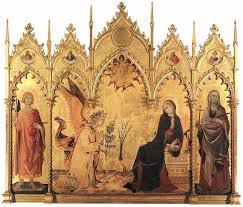
Simone Martini- Annunciation 1333 Siena Cathedral
influenced by Giottto
stylized but contains some realism
Virgin Mary- civic mascot of Sienna
Lily (white+purity)= problem for Sienese as its civic emblem of Florentines
Tartan Clothing- based on cloth importation,commerce and civic identity
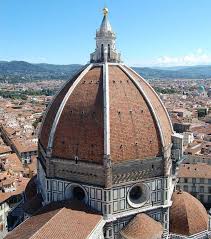
Fillipo Brunelleschi , Duomo 15thc
symbol of artistic innovation in Florence
healing economically from black death 1348- wiped 60% of population
humanist thinkers begin to engage with idea of florentines classical past
humanism stresses human potential and individuality inspire by ancient classical art- reconciles christianity with appreciation of Europes classical heritage (saw themselves as ancient romans reborn)
Orsanmichele 1337
heart of the city
grainstore, shrine and marketplace
stock exchange+ grain store
bankers are representative of the grain guild+textile guilds
Florentine commune instructed buildings to be built - advertising themselves and own authority
Commune
florence was ruled over by a city council
government was drawn from representatives of mercantile/banking communites .e.g the Medici family
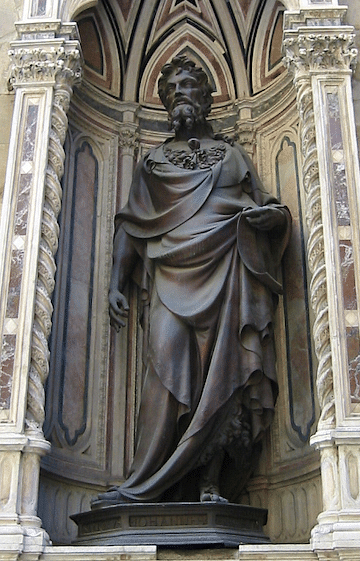
Lorenzo Ghiberti, St John the Baptist for clothmakers guild 1412-17
patriot saint of Florence
Sheoard- undercloth of unrefined sheep wool- advertising wool
express the product of guild produces,stages of production and the wealth that florence is built on
elegant,gothic style in drapery
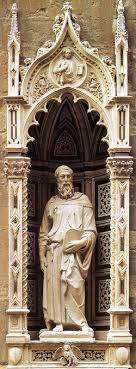
Donatello, marble statue of St.Mark 1411-13
much more sense of contraposto form
realistic approach to drapery
used chisel to insize the lines within the face
greater sense of personality to the statue
sculpts with sensitivity
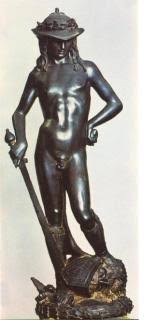
Donatello, bronze David and Goliath c1440
placed in courtyard of the Medici palace in Florence- place of politics and dealing
Popular civic emblem of florence
appropiating florentine independence into more stylized and sensuality
elitist more courtly into more playful edge
contrapposto- dainty and under life size
in the round statue
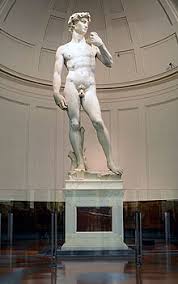
Michelangelo, David 1501-4
installed in the piazza, outside government
strong, determined - before the fight
contrapposto pose- godlike figure
defined muscles - large in size (opposite to donatello’s david)
face is set- eyes staring straight ahead